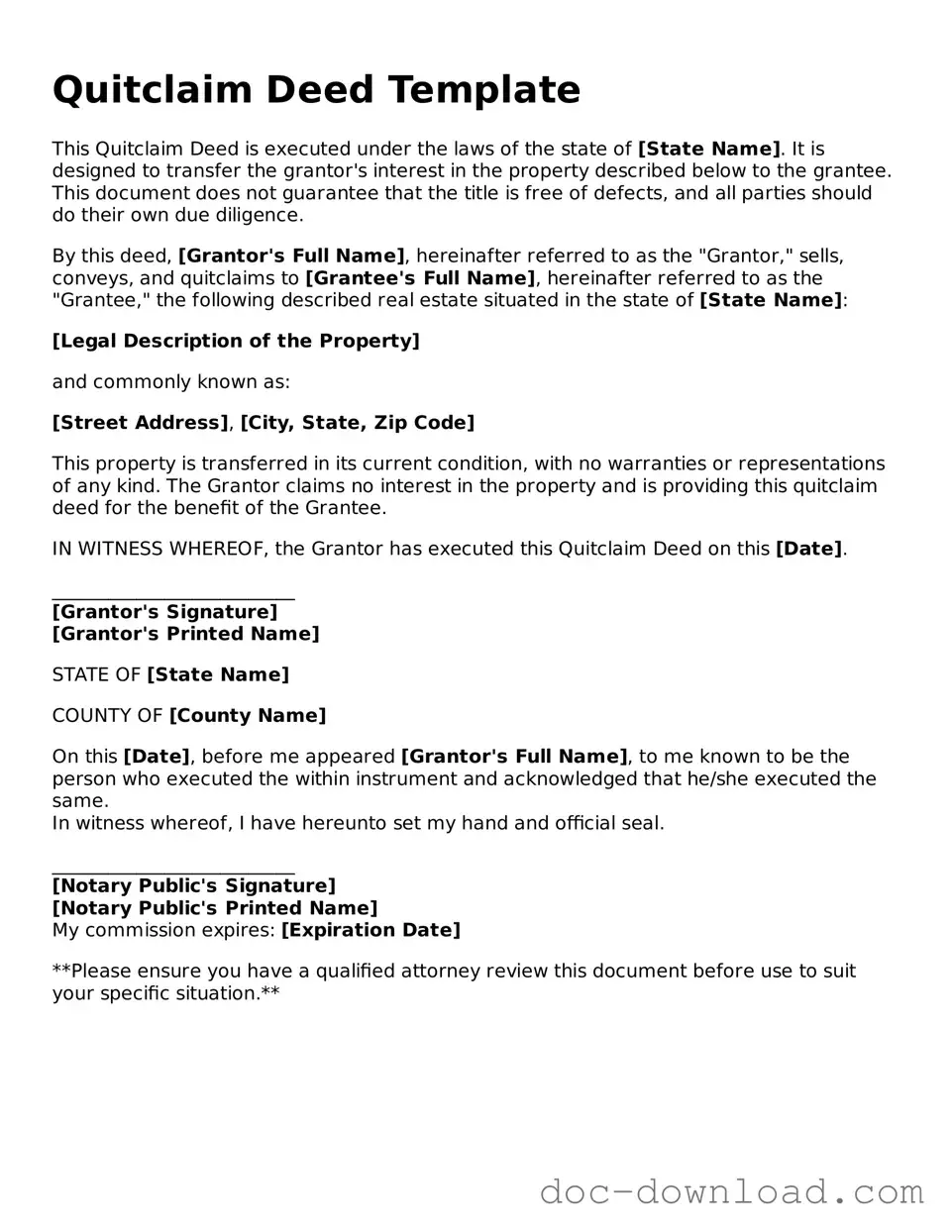Quitclaim Deed Template
This Quitclaim Deed is executed under the laws of the state of [State Name]. It is designed to transfer the grantor's interest in the property described below to the grantee. This document does not guarantee that the title is free of defects, and all parties should do their own due diligence.
By this deed, [Grantor's Full Name], hereinafter referred to as the "Grantor," sells, conveys, and quitclaims to [Grantee's Full Name], hereinafter referred to as the "Grantee," the following described real estate situated in the state of [State Name]:
[Legal Description of the Property]
and commonly known as:
[Street Address], [City, State, Zip Code]
This property is transferred in its current condition, with no warranties or representations of any kind. The Grantor claims no interest in the property and is providing this quitclaim deed for the benefit of the Grantee.
IN WITNESS WHEREOF, the Grantor has executed this Quitclaim Deed on this [Date].
__________________________
[Grantor's Signature]
[Grantor's Printed Name]
STATE OF [State Name]
COUNTY OF [County Name]
On this [Date], before me appeared [Grantor's Full Name], to me known to be the person who executed the within instrument and acknowledged that he/she executed the same.
In witness whereof, I have hereunto set my hand and official seal.
__________________________
[Notary Public's Signature]
[Notary Public's Printed Name]
My commission expires: [Expiration Date]
**Please ensure you have a qualified attorney review this document before use to suit your specific situation.**
